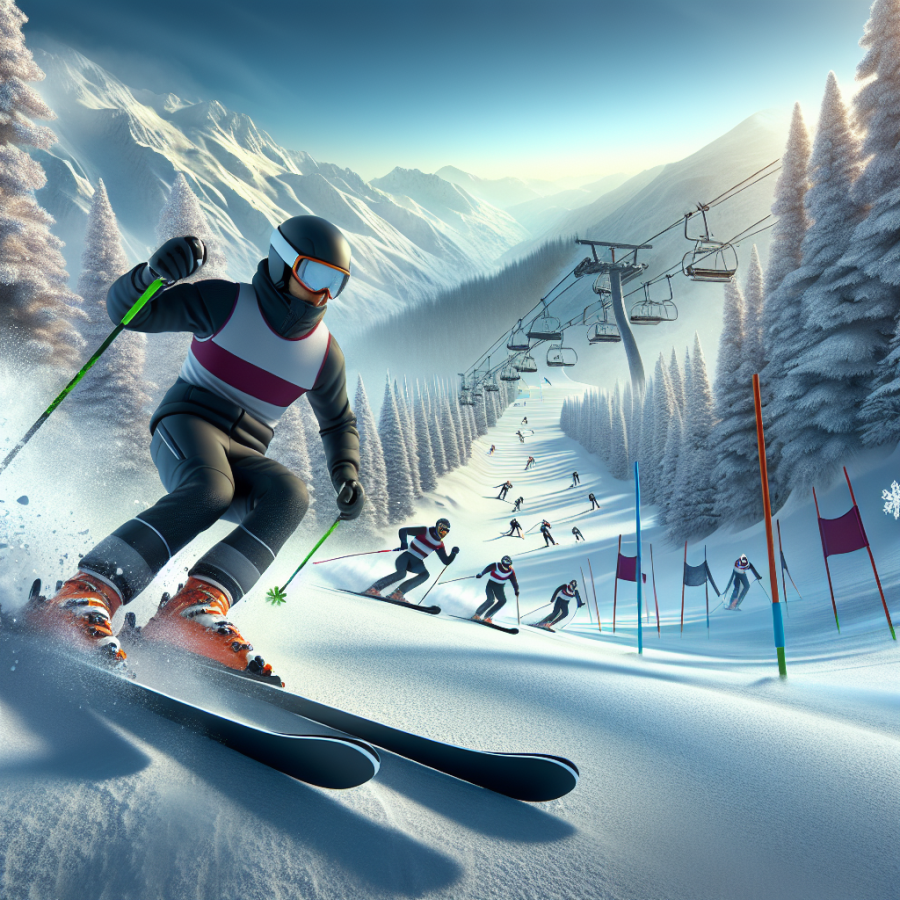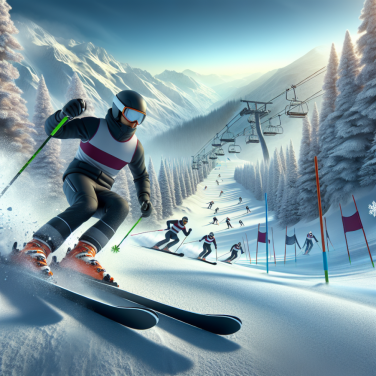The Adrenaline Rush of Alpine Combined: Techniques and Strategies for Peak Performance
Alpine Combined events are a test of versatility and adaptability, demanding proficiency in both downhill and slalom disciplines. To excel, an athlete must possess a unique set of techniques and strategies designed for peak performance.
Starting with the downhill segment, racers focus on speed and fluidity. It is essential to build a strong aerodynamic position, minimizing air resistance and maximizing velocity. Skiers meticulously study the course beforehand to memorize the terrain and plan the fastest lines. Pre-racing visualization techniques are commonly employed, allowing athletes to mentally rehearse their runs and prime their reflexes for the split-second decisions required at high speeds.
When transitioning between turns while racing downhill, professionals use the technique called 'anticipation'. This involves orienting the upper body towards the next turn before the skis have finished the current one. By doing so, they ensure a smoother and faster transition, conserving momentum and reducing the time spent on each turn.
Equipment selection is also a strategic element in peak performance. Skiers often choose longer and stiffer skis for the downhill segment for better stability at high speeds. They also pay close attention to their waxing and edging, tailoring these factors to the day’s snow conditions and temperatures to maintain optimum glide and edge grip.
For the slalom component of Alpine Combined, the focus shifts to agility and precision. Skiers train intensely on their quick reflexes and tight turns. Shorter skis are often chosen for their nimbleness and ease of maneuverability. Racers approach each gate with aggressive tactics, angling their skis sharply to carve clean, tight arcs. Upper body discipline is paramount in slalom in order to maintain balance and quickly reorient from one turn to the next.
The transition from downhill to slalom requires a significant mental shift. Racers must go from the all-out speed mindset of downhill to the rhythmic and meticulous precision of slalom. Mental fortitude and flexibility are exercised to swiftly adjust focus, with some athletes using specific breathing techniques or quick mental exercises between events to recalibrate.
Moreover, physical conditioning is crucial for both segments of Alpine Combined. Athletes undergo rigorous strength and endurance training specific to the requirements of each discipline. Lower body strength is critical for powerful turns and maintaining the tuck position during downhill runs, while core stability is instrumental in executing the rapid twists and turns of slalom.
Nutrition and recovery strategies play a vital role in maintaining peak condition throughout the event.
Read also:
Elephant Polo: The Grandeur of Giants on the Field
Tackling the Challenges of Alpine Combined Skiing: A Guide to Excelling in Downhill and Slalom
Alpine combined skiing presents a unique challenge to even seasoned skiers. It requires athletes to excel in two distinct disciplines: downhill and slalom. These events test skiers' speed, stamina, agility, and adaptability to varying terrains and snow conditions. Success in Alpine combined demands a comprehensive training regime and mental fortitude, as competitors must transition quickly between the raw speed of downhill and the technical precision of slalom.
Mastering downhill skiing is the first step to excelling in Alpine combined events. This discipline is all about speed and control as athletes navigate steep terrain at high velocities. A solid downhill skier must possess the ability to read the fall line effectively, maintain an aerodynamic posture to minimize air resistance, and make subtle weight shifts to maneuver through turns while keeping their skis grounded for maximum speed. Physical conditioning that prioritizes leg strength and cardiovascular endurance is essential because it allows skiers to maintain a high level of performance throughout the descent. Additionally, familiarity with the slope, achieved through inspection runs, is crucial to strategize the most efficient racing lines.
On the other hand, slalom skiing contrasts sharply with downhill. It is a technical event where racers are required to weave through a series of closely spaced gates at a lower speed but higher frequency of turns. Technique reigns supreme in slalom, where the agility to execute quick, short-radius turns is paramount. A skier's ability to anticipate and react to each gate, maintain balance through rapid directional changes, and employ pole planting for rhythm and leverage are critical for a competitive slalom run. Proficiency in this discipline demands rigorous technical training, with a focus on carving skills, edge control, and reflexes. Skiers must also condition the body for explosive power to optimally navigate quick turns and transitions.
The key to success in Alpine combined skiing lies in the delicate balance between the aggressive, high-speed nature of downhill and the precision-required technical skills of slalom. Athletes looking to dominate the field must train in both events simultaneously, ensuring that they can draw upon huge reserves of speed and power for downhill, then swiftly switch to the finesse and sharp focus required for slalom. Mental preparation is equally important. Skiers must develop the psychological resilience needed to stay composed under the pressure of transitioning between two contrasting ski disciplines within a compressed timeframe.
Furthermore, the equipment used in downhill and slalom also presents unique challenges.




